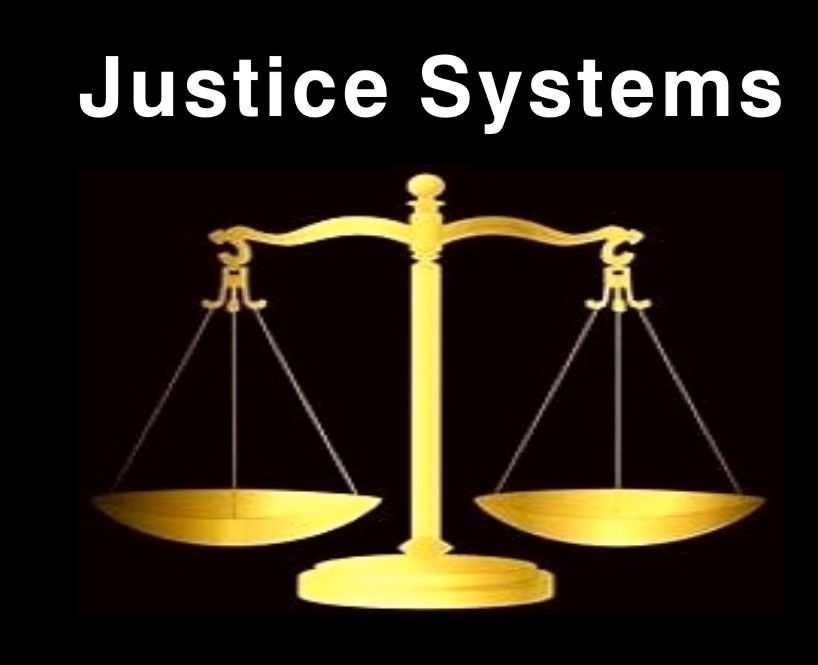
Explaining How The Italian Appeals Process Works
Above is Vincenzo Carbone, Prime President of the Italian Supreme Court of Cassation, addressing the Italian Supreme Court.
The appeal process in the Italian judicial system is disciplined by art. 593 et seq. of the Italian Code of Penal Procedure (CPP).
Both the defendant and the prosecution have the right to appeal a sentence, according to the principle of parity of the two parties in a judicial process. In 2006 a law passed by the Berlusconi government (known as “Pecorella Law”, from the name of his sponsor), intended to prohibit the right of appeal of the prosecutor, similarly to what happens in the US, however the Italian Constitutional Court struck down that law as unconstitutional since it is in violation of the parity of the two parties in the process, as explained above. As a result the CPP has been modified to reflect its original version.
It is to be noted however, that if only the defendant requests an appeal (and not the prosecution), then the appeal court can only confirm or decrease the sentence of the first trial, but not increase it.
Since Mignini has already said that they won’t appeal the case, Amanda and Raffaele are likely to see their jail sentence decreased by a few years, or at most confirmed, but not increased. Art. 575 of the Italian Penal Code however prescribes a minimum of 21 years for voluntary homicide.
The principle of “double jeopardy”, which is also guaranteed by Italian law and by the law of all members of the European Union as condition of membership, does not apply to the appeal trial, as such trial is interpreted as being a mere continuation of the same first trial. The double jeopardy principle will therefore apply only after the sentence is definitive, i.e. after the Supreme Court of Cassation decision. In other words if Amanda and Raffaele are found not guilty after all the appeals are exhausted, the Italian state will not be able to try them again in the future.
This characteristic is not unique to Italy, most European countries, in fact, apply the double jeopardy only after all appeals have exhausted, among these Germany and France, which also permit the appeal by the prosecution.
The competence of the appeal process is disciplined by art 594 of the CPP. Such article establishes that the Appeal Court of Assizes has jurisdiction over the sentences rendered by the Court of Assizes. The Court of Assizes is the court in Italy which tries serious crimes, that is those crimes for which the penal code provides a maximum punishment of at least 24 years.
In this case the Corte d’Assise d’Appello of Perugia will have jurisdiction over the case. However the defense may request a change of venue, if they can demonstrate just cause.
The terms of the request for appeal are disciplined by art. 595 of the CPP. Such article specifies, among other things, that the party requesting the appeal can do so within 15 days from the day the Sentence is communicated. If such sentence is particularly complex (as this case is) the judge can request that the “Motivazione della Sentenza”, often referred to in TJMK as the Judge’s Report, or be filed with the court within 90 days from the end of the trial. In this circumstance the terms to file an appeal is 45 days, instead of 15.
The Italian constitution requires that all sentences be accompanied by this Report, including appeal sentences. As we’ve seen with Judge Micheli’s Report on Rudy Guede’s trial, the Sentence Motivation Report must explain the entire rationale that the judges utilized to reach the decision. The lack of such report would invalidate the sentence.
Once one or more parties to the trial requests an appeal, within 15 days from the day such Motivation report is communicated, the competent court will then acquire all the documentation regarding the case. The court will then notifies all parties of the beginning of the hearing at least 20 days before the commencement day.
As mentioned above, the appeal process in Italy is a brand new trial where all evidence and testimony is analyzed in the same terms as the first trial. The standards are however higher. The president of the Appeal Court of Assizes is in fact a judge from the Supreme Court of Cassation (the members of the Supreme Court are actually called “Consiglieri”). The requisites for being one of the 6 jurors are also higher. They must be all holding a high school degree (in the first trial the minimum required is only a middle school education).

[Image Above: The Seat of the Italian Supreme Court of Cassation, in the Hall of Justice in Rome, also known as “Il Palazzaccio” or the Ugly Palace].
The extraordinary broad appeal rights awarded by the Italian system are all part of the 1989 reform, which intended to add even more guarantees to the right of the accused. This has resulted in an incredible increase in pending cases in the overburdened Italian justice system. According to the latest report to Parliament by Justice Minister Angelo Alfano the pending cases in the Italian justice system at the end of 2006 amounted to nearly 9 million cases.
Over 5.4 million were civil cases, and over 3.3million criminal cases. Of these 3.3 million penal cases, over 1/3 were first trials, the rest were appeals. Compared to the rest of Europe Italy’s pending workload amounted to 3 times the one from France, over 6 times the one of Germany, and 5 times the one from Spain. The criminal cases pending in the first trial alone are 1.2 million, a figure twice as large as the one of Germany, Spain and England combined!
This situation, coupled with the fact that the number of Italian magistrates is about the same as other similar European countries, has resulted in an incredibly slow process. On average a criminal trial lasts 426 days in the first trial, and 730 days at the appeal trial, a duration much longer than any other EU country. The Perugia case was therefore faster than average, having lasted less than a year.
This situation is exacerbated by the broad appeal rights guaranteed also on the 2nd level of appeal, at the Supreme Court of Cassation. Like other supreme courts around the world, such court does not re-examine the entire body of evidence, but only “˜errores in iudicando’ and “˜errores in procedendo’ (errors in procedure or application of the law).
However, unlike its American or English counterparts, the Italian Supreme Court cannot refuse to review a case, and defendants have unlimited appeal rights to the Supreme Court of Cassation. They don’t even have to wait for the Appeal Court. You can in fact appeal to the Supreme Court directly after the first trial.
To give an idea of what this creates I’ll cite some figures. The US Supreme Court renders annually about 120 decisions. The Supreme Court in England about 75. The Italian Supreme Court of Cassation issues over 30,000 sentences every year!! No surprise then about the huge backlog, in spite of the fact that the Italian Supreme court consists of over 400 judges (called Consiglieri), divided into various sections (each of 5 consiglieri), all nominated by the Consiglio Superiore della Magistratura (CSM), the Italian Magistrates’ self governing body explained in a previous post.
Besides the broad appeal rights granted by the Italian law, an ulterior incentive to appeal is given by the fact that Italy has a very high amendment rate during the appeal process. Approximately half of all sentences rendered in the first trial are amended during the appeal process, a percentage which is 3 times higher than France for example. The ones that are not amended often see a decrease in punishment.
No surprise therefore that Italians always appeal their sentences. And some analysts have even ventured to say that Italian appeal courts like to modify the sentences of the first trial just for the purpose of justifying their own existence.
Given these facts, coupled with the chronic lack of prison space, it shouldn’t be a surprise that in spite of the Cosa Nostra, the Camorra and N’drangheta (as the mafia is called in the various regions), Italy has maybe the absolute lowest prison population in the world in relationship to the total population.
Italy in fact has 66 inmates for every 1 million population, a figure matched only by Denmark, a country certainly not famous for their organized crime. By comparison, the US boasts a prison population of more than 750 inmates over 1 million inhabitants, a figure 12 times the one in Italy.
If Amanda and Raffaele really wanted to experience the thrill of committing a murder, Italy is definitely the place to do it, and get away with it!

[Image Above: Italian “Guardasigilli” (Justice Minister) Angelo Alfano]
Comments
I have been away for some time, and before I could begin to express my satisfaction at the outcome of the trial - which I believe was justly conducted - I hear about this backlash from Cantwell and the others. She says it’s an anti-American sentiment that convicted Amanda Knox - not lack of alibi, false-accusations of an innocent man, consistent change in her stories, evidence of a staged break-in, eye wittness account, nor those damning spots of blood where Knox & Meredith’s DNA were mixed together. To me, who has been following the case closely for two years, Knox’s sentence is not a sign of anti-Americanism; but rather Cantwell’s reaction is a sure sign of anti-Italianism. How else can she justify ignoring all the above (which was not part of the contested DNA) and still insist that Knox was convicted unfairly? The only other possible justification must be Cantwell’s anti-Italianism. And if that’s too generous a nick-name, then perhaps Cantwell is anti-anything that’s not American. Hang on!!- that makes her a fascist!
Excellent article Commissario! It saddens me to think that the Kerchers have to sit through the whole thing again, and that the sentences may be reduced on appeal. I believe the verdict was correct, and the thought of Amanda and Sollecito walking free in ten years or so is simply dreadful. It is this that makes me angry with the Italian system, not the verdicts! How can it be right? They took a life in a horrific murder. How can justice be served if the sentences are reduced like this?
Thank you Commissario for this excellent, complex and extremely informative article. It’s always good to have contributors on-board with knowledge of the Italian legal system. Which seems to me very much in favour of the accused.
I’m not really sure what Amanda’s supporters are so worried about. Any US trial would surely not afford her so many legal advantages including a guaranteed appeal and an almost certain chance of a reduction in sentence.
TT, I agree it must be so painful for the Kercher family knowing this will in all likelihood drag on for many years to come. Though I’m sure they will conduct themselves with absolute dignity throughout. I really do have so much admiration for them.
Thank you Commissario Montalbano for yet another clear and learned exposition of how the Italian justice system operates.
Fascinating insights into a complicated process of checks and balances that certainly seems to work in favour of the accused, even though the process is so lengthy.
Well, according to a 2003 study the average verdict for a voluntary homicide carried a punishment of only 12.4 years in prison, in spite the fact that the Penal Code prescribes a minimum of 21 years for voluntary homicide (applicable “attenuating circumstances” then cause the reduction). But even after receiving this number of years, the law doesn’t state that you actually have to serve all those years. “The Italian constitution in fact provides that the punishment must aim to the re-education and rehabilitation of the convicted”. On average convicted defendants serve only about 35% of the years for which they were convicted. Even if convicted in appeal, both Amanda and Raffaele could actually be free few months after the final sentence by the Supreme Court!
Commissario,
if K/S do get a reduction in sentence on appeal from 24 to say 18 years, does that mean that Guede automatically goes from 18 to 12 years because of the 1/3 reduction rule?
Where next:
Click here to return to The Top Of The Front PageOr to next entry Italian Judge Ruling Is Tough But Fair In Another Case Involving Americans
Or to previous entry Why The Italian Judiciary Is Probably Less Prone to Pressure Than Any Other In The World

